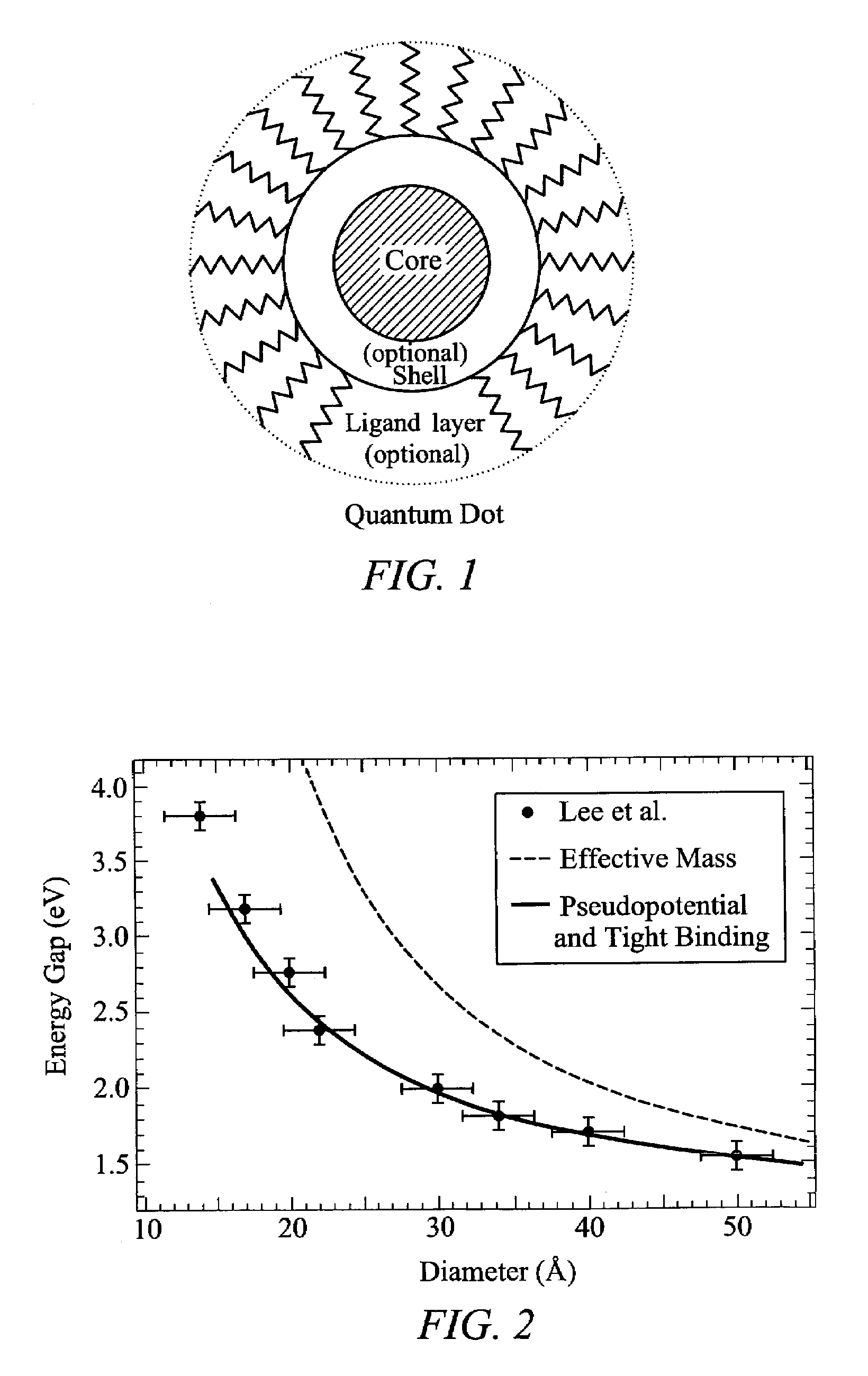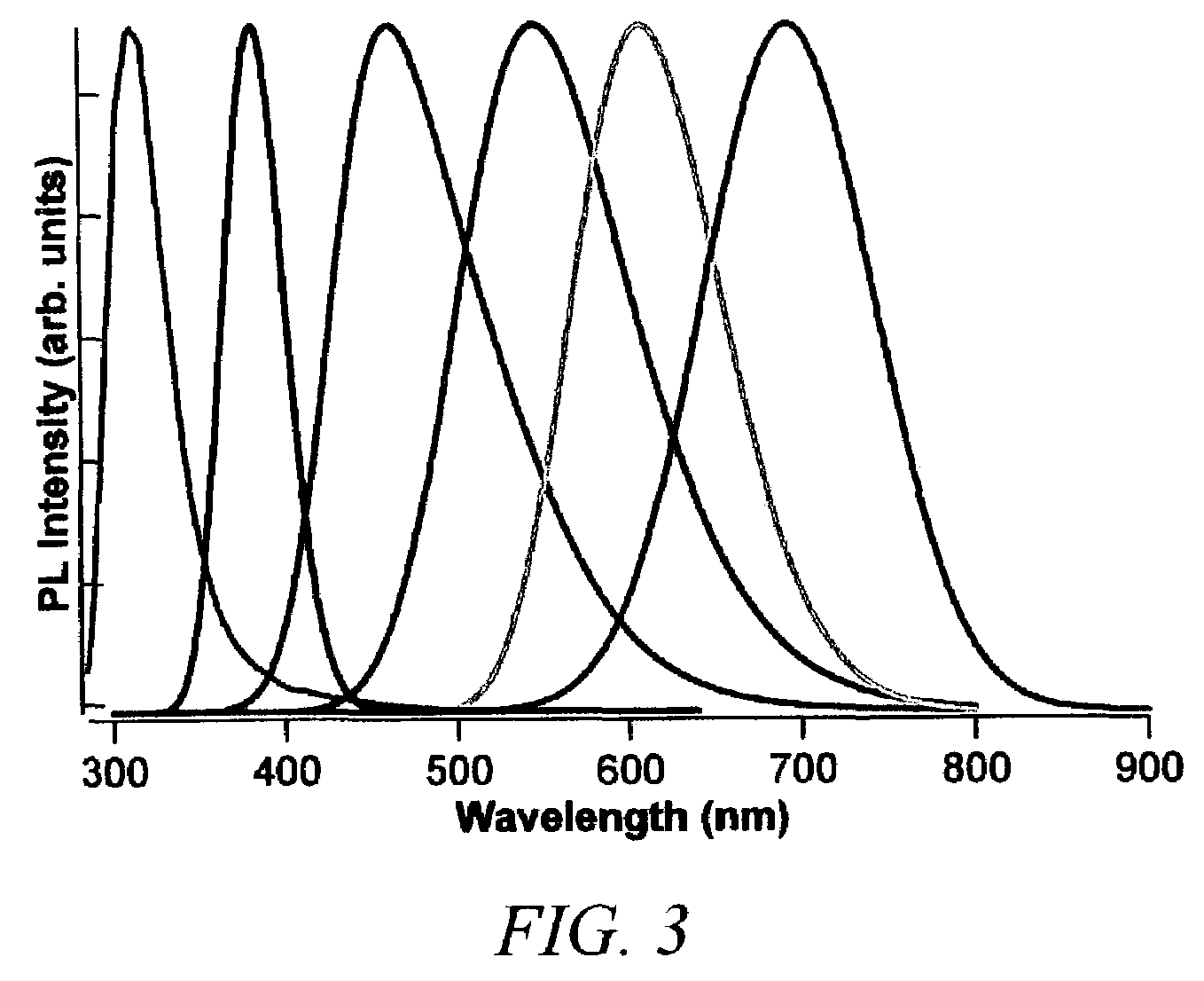Quantum dots, nanocomposite materials with quantum dots, devices with quantum dots, and related fabrication methods
a nanocomposite material and quantum dots technology, applied in nanoinformatics, instruments, optical elements, etc., can solve the problems of increasing the complexity, size, and expense of high-speed electronic cores, and the rate-limiting component of oeo devices in any optical network, so as to reduce the overall fom, improve the efficiency of oeo devices, and improve the effect of performan
- Summary
- Abstract
- Description
- Claims
- Application Information
AI Technical Summary
Benefits of technology
Problems solved by technology
Method used
Image
Examples
example 1
[0155]As an example of how the current invention is used, we now describe a preferred embodiment in which an engineered nonlinear nanocomposite material is incorporated into a waveguide nonlinear directional coupler. In the current example, the waveguide core is fabricated from doped silica with an index of refraction of 1.52 at 1.55 μm. It will be obvious to one of skill in the art that doped silica can have an index of refraction over a wide range of values. The current example is not meant to limit the scope of the invention, and it will be understood that variations on this example can extend to waveguides with an arbitrary index of refraction.
[0156]In the case of a nonlinear optical coupler, light is evanescently coupled between two waveguides such that a signal entering one waveguide oscillates between the two as a function of the interaction length. By choosing an appropriate length, the light can be coupled completely into one or the other of the two output waveguides. By ch...
example 2
[0164]To highlight the flexibility of the current invention, a second preferred embodiment is included to demonstrate how the current invention may be used in a waveguide nonlinear Mach-Zehnder interferometer (MZI). In this case, the waveguide core is fabricated from partially oxidized silicon with an index of refraction of 2.4 at 1.55 μm. Once again, it will be apparent to one of skill in the art that partially oxidized silicon can have a range of indices of refraction, and that 2.4 is not meant to limit the scope of the invention. Variations on this example comprising other possible indices are expressly assumed and claimed under this patent.
[0165]In a nonlinear MZI, a data signal traveling along a waveguide core is split into two separate and uncoupled waveguide arms with a defined phase relation between them. The signals travel along the arms for a predetermined length and are then recombined. Phase differences resulting from the history of the light in each arm result in constr...
PUM
 Login to View More
Login to View More Abstract
Description
Claims
Application Information
 Login to View More
Login to View More - R&D
- Intellectual Property
- Life Sciences
- Materials
- Tech Scout
- Unparalleled Data Quality
- Higher Quality Content
- 60% Fewer Hallucinations
Browse by: Latest US Patents, China's latest patents, Technical Efficacy Thesaurus, Application Domain, Technology Topic, Popular Technical Reports.
© 2025 PatSnap. All rights reserved.Legal|Privacy policy|Modern Slavery Act Transparency Statement|Sitemap|About US| Contact US: help@patsnap.com



